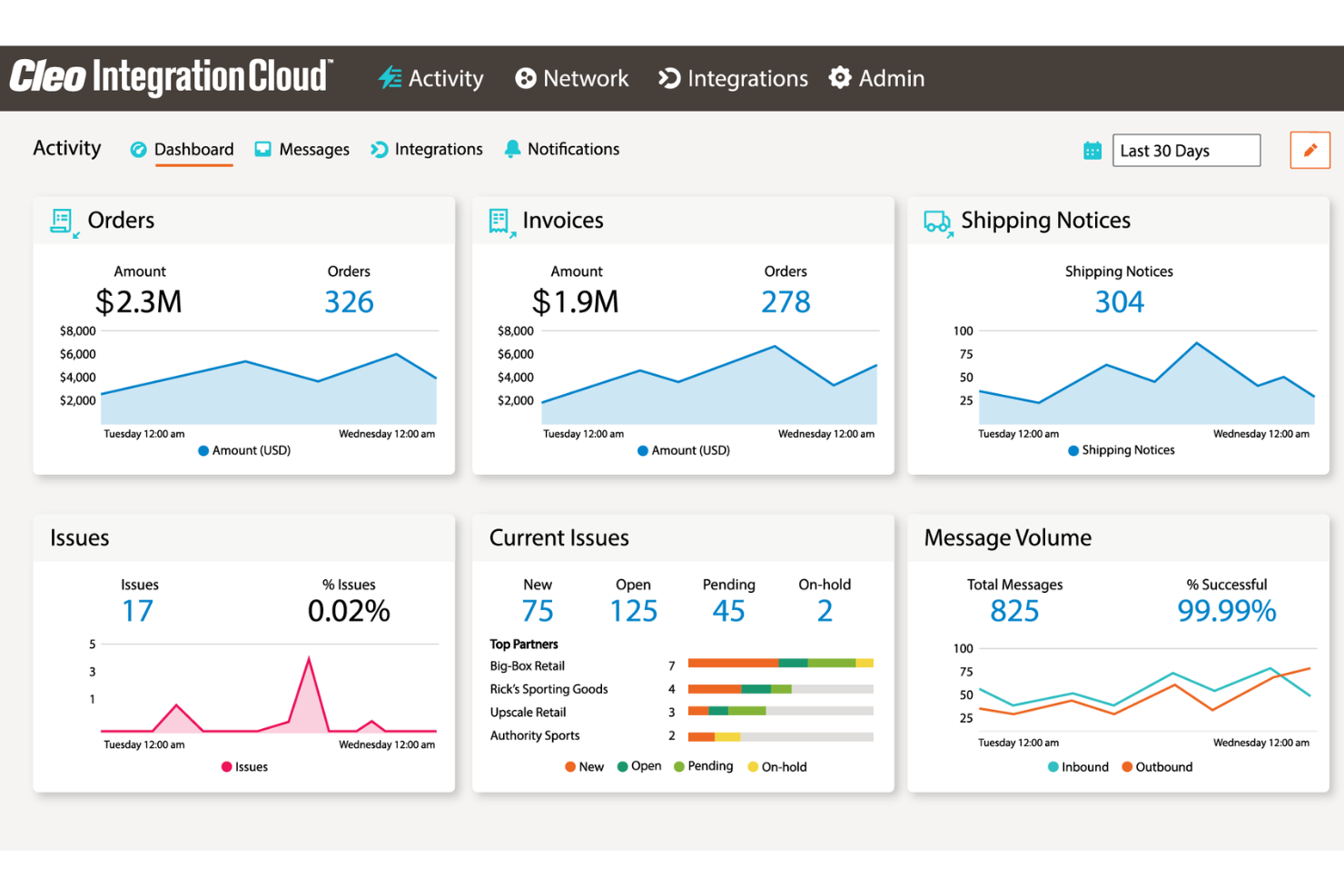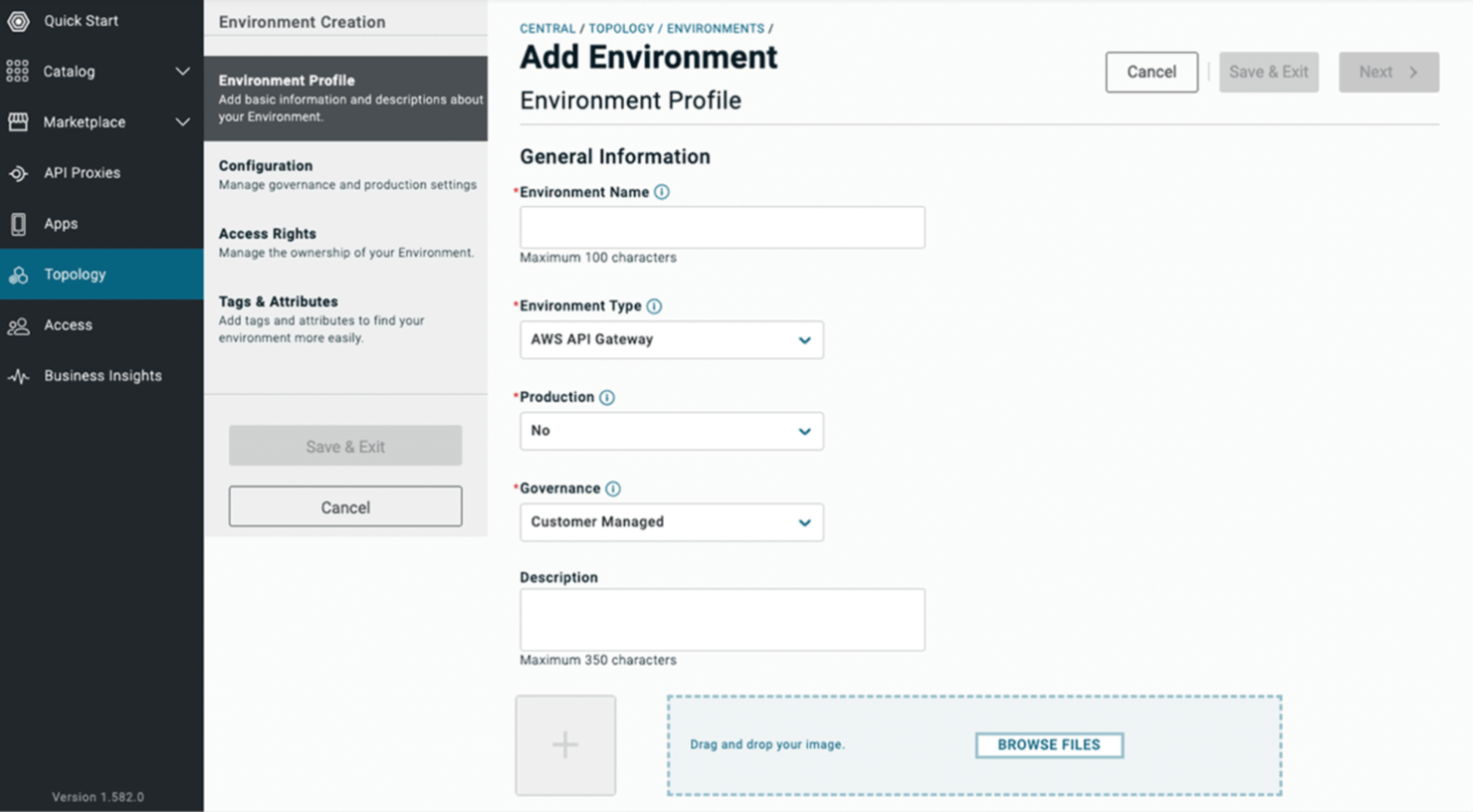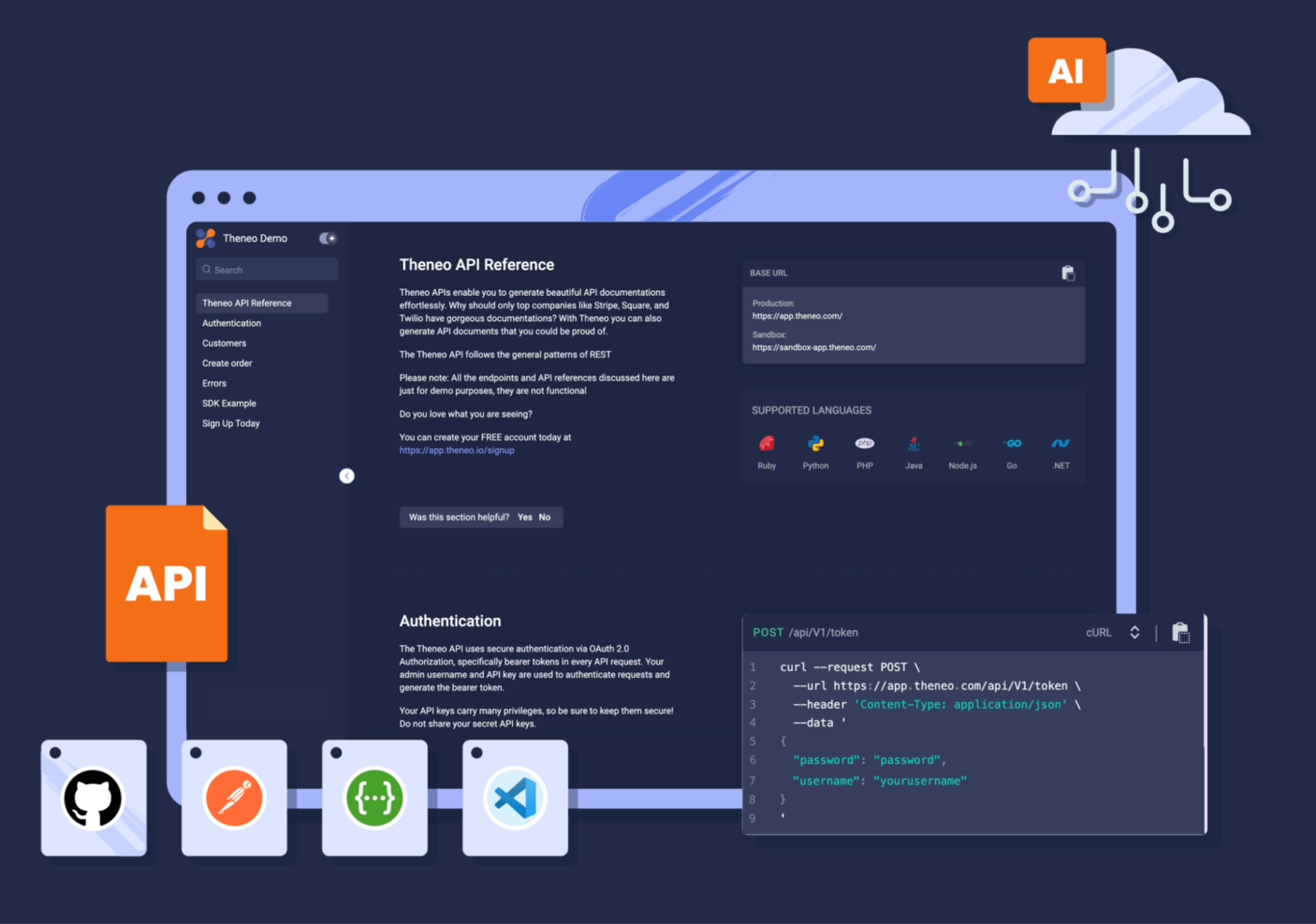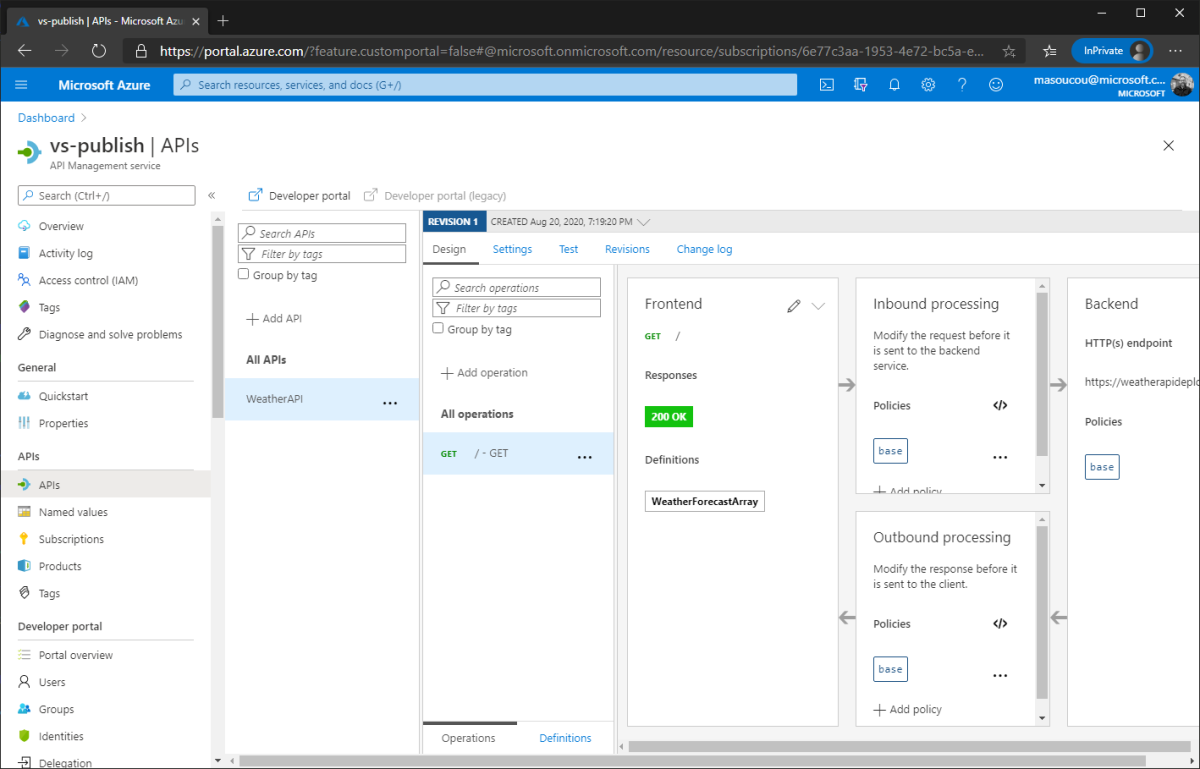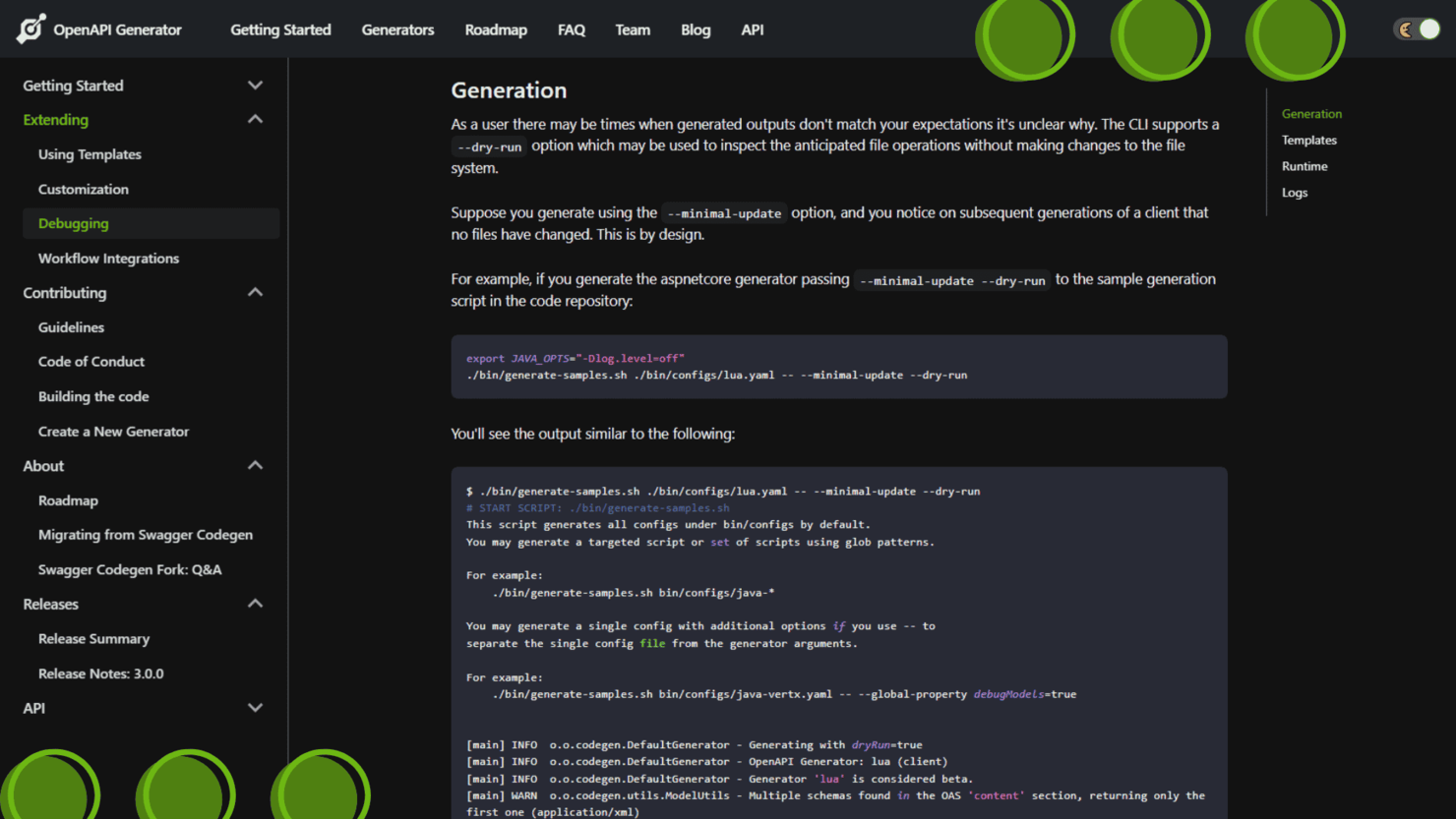Best API Tools Shortlist
Here's my pick of the 10 best software from the 20 tools reviewed.
Our one-on-one guidance will help you find the perfect fit.
With so many API tools on the market, choosing the best one for your needs can be challenging. You understand the need to simplify API integration and management, but finding an API tool that meets your requirements is tough.
I'm here to help! In this article, I'll share my insights from using dozens of API tools across projects. I'll highlight my top picks for the best API management tools, making your choice simple.
Why Trust Our API Tool Reviews
We’ve been testing and reviewing API tools since 2023. As API tool users, we know how critical and challenging it is to make the right decision when selecting software.
We invest in deep research to help make better software purchasing decisions.
We equip CTOs and technical leaders at fast-growing SaaS companies with expert guidance and resources to help them win at work. Learn how we stay transparent & our app tool review methodology.
Best API Tools Summary
| Tool | Best For | Trial Info | Price | ||
|---|---|---|---|---|---|
| 1 | Best for programmatic data management | Free demo available | Pricing upon request | Website | |
| 2 | Best for EDI and API automation for supply chains | Free demo available | Pricing upon request | Website | |
| 3 | Best for fast API creation | Free plan available | From $39/3 users/month | Website | |
| 4 | Best for universal API management | No free trial | Inquire for custom quotes | Website | |
| 5 | Best AI-assisted API documentation | Free plan available | From $120/month | Website | |
| 6 | Best for hybrid and multi-cloud API management | Free trial available | From $48.04/month | Website | |
| 7 | Best for API automation | Free trial + demo available | Pricing upon request | Website | |
| 8 | Best for transforming API annotations into documentation | Not available | Free to use | Website | |
| 9 | Best for generating API code | No | Free to use | Website | |
| 10 | Best API marketplace | Free plan available | From $10/month | Website |
-

Docker
Visit WebsiteThis is an aggregated rating for this tool including ratings from Crozdesk users and ratings from other sites.4.6 -

Pulumi
Visit WebsiteThis is an aggregated rating for this tool including ratings from Crozdesk users and ratings from other sites.4.8 -

GitHub Actions
Visit Website
The 10 Best API Tools Reviews
Let’s dive deeper to explore the unique features, benefits, and pricing models of the 12 best API tools you can use right now.
Adverity is a data platform that helps teams manage and utilize their data effectively. It offers tools to collect, process, and distribute data, aiming to simplify data workflows.
Why I Chose Adverity: I picked Adverity because it allows you to interact with your data programmatically. Its management API enables tasks like creating datastreams, scheduling data fetches, and managing jobs through API requests. This functionality is beneficial for teams looking to automate their data workflows and integrate Adverity into their existing systems. Additionally, its API tool supports administrative tasks such as user management and setting up notifications, providing comprehensive control over your data processes.
Adverity Standout Features
Other features include data quality monitoring, which helps identify issues like duplication and volume inconsistencies in your data streams. The platform also offers customizable data alerts, allowing you to set up notifications for specific data conditions. Integrations include Google, Meta, TikTok, Google BigQuery, Looker Studio, Facebook Ads, Amazon Advertising, Hubspot, Salesforce, Amazon S3, Snowflake, and Microsoft Azure.
Pros and cons
Pros:
- Includes features for monitoring data quality and status
- Provides customizable data transformation capabilities
- Offers a wide range of data connectors
Cons:
- The initial setup can be time-consuming
- Certain configurations may require technical knowledge
Best for EDI and API automation for supply chains
The CLEO Integration Cloud is a comprehensive platform designed to streamline B2B integrations across supply chain ecosystems by supporting any-to-any integrations directly into ERP, TMS, and WMS systems.
Why I chose CLEO Integration Cloud
CLEO Integration Cloud can automate EDI and API workflows, eliminating the need for manual intervention and custom scripting. This automation accelerates onboarding times, allowing users to connect with trading partners quickly. Additionally, CLEO Integration Cloud provides end-to-end visibility into integration flows, processes, and transactions, enabling both business and technical users to monitor and manage operations effectively.
CLEO Integration Cloud Standout Features
Features include rapid error resolution, which improves trading partner scorecards by eliminating errors and chargebacks through proactive monitoring and alerting. Additionally, the real-time business insights feature offers configurable dashboards and alerts for both technical and business users. Thousands of pre-built and customizable integrations allow users to be able to quickly and easily connect to a variety of systems including TMW, Trimble, Project44, Microsoft D365, SAP, NetSuite, and many more.
Pros and cons
Pros:
- Real-time monitoring and visibility of data
- Manages EDI transactions effectively
- Supports any-to-any translations
Cons:
- No free trial available
- Learning curve for new users
Stoplight is an API tool designed to help you design, document, and build APIs quickly and easily. The service places a strong emphasis on team collaboration, project visibility, and governance.
Why I chose Stoplight: I chose Stoplight for its intuitive interface and full API lifecycle support. The visual and collaborative editor is clean, easy to use, and provides clear instructions on how to perform different tasks and functions. I also appreciated Stoplight’s detailed resource center, with instructional guides in written, audio, and video format.
Stoplight Standout Features
Spotlight’s standout features include the Stoplight Studio, which has an easy-to-use interface that is accessible to both technical and non-technical staff. This helps you design APIs in mere minutes and then use virtual mock servers to test your designs and receive feedback from stakeholders.
Stoplight can also help you incorporate governance by letting you use predefined or custom guidelines as a reference.
Pros and cons
Pros:
- Open-source API tools for mocking, lifting, and documentation
- Useful and easy-to-follow learning materials in written, audio, and video formats
- Complete API lifecycle management, from design to documentation to compliance
Cons:
- UI can be hard to navigate as projects become more complex
- Expensive premium plans
Axway Amplify is an API management platform that features an integrated marketplace, management and integration service, and open banking solution. Amplify consists of an open platform that lets you publish, validate, and govern APIs in both multi-cloud and on-premise environments.
Why I Chose Axway Amplify: Axway Amplify caught my attention for its innovative use of automation, which enables you to automate the process of finding, reusing, and applying governance standards to APIs across multiple cloud and on-premise environments. It also lets you easily monitor the usage and performance of your APIs while providing detailed analytics for the full API lifecycle.
Axway Amplify Standout Features
Features that make Axway Amplify unique include the Open Banking solution. Open Banking allows banks to share financial details in a safe, secure, and simple manner. I appreciated how this tool helps you reap all the benefits that Open Banking has to offer, such as widespread integration throughout the financial ecosystem.
Pros and cons
Pros:
- Unique emphasis on Open Banking solutions
- Detailed analytics and API performance monitoring capabilities
- Strong documentation and customer support
Cons:
- Can be expensive for businesses on a limited budget
- Over-abundance of features can be overwhelming
Theneo is an API documentation tool that reviews your API collection and provides AI-generated descriptions and summaries. Theneo also has a built-in editor called Ease, which can help you create beautiful and easy-to-read documentation.
Why I Picked Theneo: Theneo stood out to me because it helps API providers solve a unique problem that many other API tools do not address as well: documentation. Theneo reduces manual documentation by providing AI-generated descriptions and summaries, which you can use to generate content and improve your existing content.
Theneo Standout Features:
The best aspect of Theneo is the built-in AI, which allows you to generate new content to use as a documentation baseline, and can also increase the quality of your final documentation via AI-powered suggestions to improve flow, grammar, punctuation, and consistency. Theneo is also compatible with Github, Swagger, and Postman.
Pros and cons
Pros:
- Custom API branding capabilities
- Supports OpenAPI, Postman, SOAP API, GraphQL, and AsyncAPI
- Powerful AI tools for content generation and editing suggestions
Cons:
- Can only be updated a set number of times per day
- Limited compatibility with major programming languages
Microsoft Azure API Management is an API management tool intended to help deploy and manage APIs on the Microsoft Azure platform, along with other clouds and on-premises environments. You can use Azure API Management to control data access, transform legacy web services into RESTful APIs, and incorporate security and compliance.
Why I Chose Azure API Management: The first thing that stood out to me was the pay-as-you-go pricing model, which lets you pay only for the time that you spend on the service. I also appreciated the robust security and customization features. You can control how your data appears to different users (i.e., employees, visitors, customers), implement strict authorization and authentication standards, and customize the developer portal with your own branding to help boost API discoverability.
Azure API Management Standout Features
Azure API Management lets you deploy self-hosted gateways, meaning gateways are placed in the same environments that the APIs are hosted in. As a result, you can more easily streamline the flow of traffic, which helps reduce latency and lower data transfer costs.
You can also use the custom developer portal to personalize the branding of your API. And while that feature isn’t unique to Azure, the Microsoft branding adds an extra level of authenticity to your API.
Pros and cons
Pros:
- Manages assets across multiple environments, including in the cloud and on-premises
- Comprehensive security measures control users’ data access
- Custom developer portal to promote products to internal teams and external partners
Cons:
- Integrating with apps outside of the Azure platform can be difficult
- Flexible pricing can make it hard for businesses to manage fluctuating costs
Celigo is an Integration-Platform-as-a-Service (IPaaS) that helps you connect and manage APIs, automate business processes, and sync data across multiple cloud and on-premise environments.
Why I Chose Celigo: Despite how feature-rich Celigo is, I was surprised by how easy it was to learn. The instructor-led training sessions let you engage with a professional one-on-one, where they cover a range of topics – i.e., establishing connections, resolving errors during flows – and let you ask questions.
Celigo also makes it easy for you to automate business processes using pre-built automations that follow industry best practices.
Celigo Standout Features
I appreciated that Celigo has features to assist with virtually every aspect of the API management process, from development to integration and email and Excel integration. For technical users, you can develop your own integrations with custom code.
You can also browse 100+ APIs from official vendors like Microsoft and Salesforce and use universal connectors for over 100,000 apps.
Pros and cons
Pros:
- Strong documentation and customer support
- Huge range of pre-built apps and business logic flows
- Easy to learn and use
Cons:
- Over-reliance on universal connectors can lead to issues with third-party APIs
- Custom pricing can make it hard to predict ongoing costs
apiDoc is an API documentation tool that you add documentation straight to your source code through annotations. This eliminates the need to use a separate tool or third-party library to generate and manage your documentation.
Why I chose apiDoc
I appreciated apiDoc because of how it eases the documentation process, and can help both internal developers and users better understand your product. The workflow feels streamlined because you manage everything in your source code without the need for a separate tool, making it easier to keep your internal and external documentation in sync.
apiDoc Standout Features
apiDoc is an all-in-one package, meaning you simply download the apiDoc files, place them in a directory, and install them from your source code. You then link your code to apiDoc, and – tada! – it will generate documentation. Also, you can attach version numbers to your projects, making it easy to track changes and compare versions.
Pros and cons
Pros:
- Easy to track API changes and compare versions
- Compatible with most major programming languages
- Easily manage API documentation within your source code
Cons:
- Relatively small user base and community support
- Only compatible with RESTful web APIs
OpenAPI Generator is an API management tool that allows you to generate clients, servers, and documentation from OpenAPI documents. OpenAPI Generator has more than 50 client generators, which you can use to generate and implement code into your API.
Why I Chose OpenAPI Generator: I selected OpenAPI as a recommendation for anyone who needs powerful API generation tools. Whether you’re building a MySQL database or server stub, OpenAPI Generator helps reduce manual coding errors by automatically generating code that meets your specifications. You can also customize the code you generate based on the functionalities you need, such as generating documentation in Cwiki and HTML formats.
OpenAPI Generator Standout Features
OpenAPI Generator has more than 50 client generators for Android, Dart, Ruby, Rust, and many more. It is also very customizable, letting you transform templates with additional static documentation and custom tooling scripts. OpenAPI Generator also supports listing generators, “Meta” generators, and validation of Open API - both 2.0 and 3.0 versions.
Pros and cons
Pros:
- Active Slack community for troubleshooting
- More than 50 client generators and more than 40 different languages and technologies for server stubs
- Automatic code generator helps reduce manual coding errors
Cons:
- Limited security features
- Automatically generated code still needs reviewing to ensure it works
RapidAPI is the largest API marketplace in the world, with more than 4 million developers using the platform to consume APIs and more than 40 thousand APIs currently in the hub.
RapidAPI is great for API providers, thanks to its built-in developer portal and large user base. It is also great for consumer developers, as you’ll find plenty of APIs in broad categories to choose from, ranging from weather and transportation to accounting and music.
Why I Picked RapidAPI: I selected RapidAPI Marketplace because I liked how easy it was to browse and find the APIs you need, right down to their category. There are thousands of APIs to choose from, meaning you are nearly guaranteed to find one that meets your unique requirements.
Another great thing about RapidAPI is that you can test the response times and functionality of your chosen APIs before you integrate them into your system, giving you the assurance that the ones you choose will work properly.
RapidAPI Standout Features
I noted a wide range of features in RapidAPI, with tools to help you design, develop, test, and publish your APIs, as well as find and connect APIs to your system.
While many of these features are standard for most API tools, what sets RapidAPI apart is its ease of use and large user base. Whether you are an API provider or consumer developer, there is an audience for your next API, and there are more than 40,000 APIs ready to use.
Pros and cons
Pros:
- Integrated API design, development, and data-driven testing tools
- Over 40,000 APIs for consumer developers to find and connect to
- Hundreds of different API categories
Cons:
- Some published APIs can still present issues and not perform as expected
- User interface can be challenging for newcomers, especially when designing APIs
Other API Tools to Consider
- IBM API Connect
For API lifecycle management
- MuleSoft Anypoint Platform
For API delivery and deployment
- Apigee
For Google Cloud API management
- Readme
For creating interactive API documentation
- Treblle
For real-time API monitoring and logging
- Tyk
Open-source API
- Software AG
For seamless data integration
- FastAPI
For building APIs with Python
- SoapUI
API testing tool
- Flowgear
For creating workflows
Related API Tool Software Reviews
If you still haven't found what you're looking for, check out these closely related API tool software solutions we've tested and evaluated.
- 29 Best IT Infrastructure Software Reviewed For 2025
- 41 Best IT Management Software Reviewed For 2025
- 25 Best DevOps Tools Reviewed For 2025
- 25 Best Cybersecurity Software Reviewed For 2025
- 23 Best Cloud Service Providers Reviewed For 2025
Selection Criteria for API Tools
When I'm in the market for API tool software, I lean heavily on my own experiences and deep dive into each tool's capabilities. It's not just about ticking off feature boxes; it's about how these features play out in real-world scenarios.
Core API Tool Functionality - 25% of total weighting score
Standard features for API tool software usually span user-friendly interfaces, detailed analytics, robust security measures, scalability, and diverse API type support. Other features include integrated testing tools, rate limiting, customization options, a supportive developer community, and integration capabilities.
For a tool to even get on my radar, it needs to meet these basics. It's all about how well it lets you:
- Craft and oversee your APIs
- Keep tabs on how your APIs are performing
- Lock down your APIs against any security threats
- Scale your API usage as your demands grow
- Spot and fix any issues in your APIs early on
Additional Standout Features - 25% of total weighting score
I'm always hunting for what sets a tool apart. This could be anything from:
- Innovative security enhancements not found elsewhere
- Unique analytical insights or visualization tools
- Exceptional flexibility in how you manage and tweak your APIs
- Cutting-edge support for emerging API types or standards
- A vibrant community ecosystem offering unparalleled resources and support
Usability - 10% of total weighting score
The tool must be mighty yet manageable. I weigh up:
- The intuitiveness of the UI
- Clarity and usefulness of the documentation
- Availability of quick-start guides, templates, or shortcuts
Onboarding - 10% of total weighting score
Jumping into a new tool should be smooth sailing. I look out for:
- A straightforward setup experience
- Handy tutorial content like videos or interactive demos
- Supportive communities or forums where I can get tips or advice
Customer Support - 10% of total weighting score
Solid support can be a deal-breaker. I assess:
- The responsiveness and helpfulness of the customer service team
- The range of support channels available (chat, email, phone)
- Self-serve resources like a knowledge base or FAQs
Value For Money - 10% of total weighting score
I'm after bang for my buck, so I compare:
- What each pricing tier offers versus the cost
- How the tool's pricing stacks up against similar offerings
Customer Reviews - 10% of total weighting score
Honest user feedback is gold. I dig into:
- User satisfaction and testimonials
- How the tool has solved specific problems or addressed pain points
- Any recurring issues or gripes users might have
This method helps me pick out API tool software that's not just good on paper but delivers in the trenches, matching perfectly with what you need.
How to Choose API Tool Software
With so many API tool options on the market, choosing the one that matches your requirements can take time and effort. As you shortlist, test, and select your API tools, keep the following in mind:
- What problem are you trying to solve - Start by identifying the specific gap or challenge you're trying to address with the API tool. Clarifying the features and functionality needed to fill this gap will help you choose the right API tool.
- Who will need to use it - To evaluate cost and requirements, consider who'll use the API tool and how many licenses you'll need. When that's clear, decide whether your priority lies in ease of use for all users or in speed for API tool power users.
- What other tools it needs to work with - Identify the systems your API tool needs to work with, such as databases or payment gateways. Seamless integration ensures efficient data exchange and workflow automation.
- What outcomes are important - Define the key outcomes the API tool needs to achieve. These include improving data access, enhancing system interoperability, and optimizing performance. You ensure your API tool addresses your needs when you align with these goals.
- How it would work within your organization - Test how the API tool will fit into your organization's workflows and processes. Consider factors such as ease of use, user adoption, and scalability. Check current strategies and find what needs improvement. Remember, every business is different, so don't assume that because a tool is popular, it'll work in your organization.
Trends in API Tools
In 2025, API tools continue to change. This reflects the growing sophistication of business needs and technological capabilities. After looking at product updates and industry news, I've spotted some key trends shaping this field. These trends can improve how you use APIs and even push the boundaries of what APIs can do.
Emerging Features and Functionality
- Automation in API Testing: The push for automation in API testing is stronger than ever, with tools adding AI to streamline testing. This automation allows for real-time error detection and correction. In turn, it reduces development cycles and improves reliability.
- Advanced Security Protocols: As cyber threats evolve, so do the security measures within API tools. API software now uses better encryption and compliance standards.
- Real-time Analytics: Tools now offer detailed analytics. They let businesses track API performance and usage in real time. This function is critical. It optimizes API endpoints and shows how users interact, providing insights.
- Enhanced Integration Capabilities: With the rise of microservices architectures, API tools are enhancing integration capabilities. This trend addresses the growing demand for interoperability within diverse IT environments.
Diminishing Importance
- Legacy Protocol Support: Support for older API protocols decreases as newer, more secure ones replace them.
I think the trends generally point toward more automation, better security, and deeper integration in API tools. These match the needs of modern businesses: to be agile, secure, and data-driven.
What is an API Tool?
An Application Programming Interface (API) is a software interface that lets two or more applications communicate with each other. APIs improve application functionality without forcing developers to build new features from scratch. They make it possible for one application to leverage the capabilities of another in a safe, secure, and efficient manner.
An API tool is an application designed to help you make the most of your APIs. They help with design and development, automated and manual testing, and publishing. You can also use API tools to browse other people's APIs and integrate them into your own system, such as your multi-cloud or on-premise environment.
Features of API Tool Software
Through my extensive experience with API tools, I've discovered that choosing the right API tool software is crucial for harnessing its full capabilities.
The ideal software should make integration easy, ensure strong security, and be simple to manage. Here are the top features to look for:
- User-Friendly Interface - A good interface makes creating and managing APIs easy, even for those with little technical background.
- Analytics and Reporting - Detailed data and reports show how your APIs are used and where you can improve.
- Security Features - Strong security features protect your data from unauthorized access and threats.
- Scalability - Your software should be able to grow with your business, handling more API calls as needed.
- Support for Various API Types - Working with different API types, like REST and GraphQL, gives you more flexibility in developing APIs.
- API Testing Tools -Integrated testing tools help you find and fix errors early.
- Rate Limiting Rate limiting helps prevent too many API calls from overloading your system.
- Customization - This feature lets you adjust the software to meet your business's needs.
- Developer Community and Support - A good developer community and support resources help you solve problems.
- API Integration Tools - Combining with other tools and systems makes your workflow more efficient.
Choosing API tool software with these traits eases integration. It also boosts security, improves management, and helps you achieve your business goals. This approach also drives innovation and enhances communication across platforms.
Benefits of API Tool Software
As a software developer, I understand the crucial role of API tool software. It's more than a tool; it's essential for driving change. This software enhances productivity and streamlines processes in remarkable ways.
Here's my take on the top five benefits of using API tool software:
1. Enhanced Efficiency: I've found that API tool software speeds up tasks like API creation, management, and testing. It saves countless hours and much effort throughout the development process.
2. Improved Collaboration: It provides a shared platform for me and my colleagues to work on API projects together. This fosters improved communication and teamwork among developers, testers, and other involved parties.
3. Boosted Scalability: In my experience, API monitoring tools help scale up our API network to support more users and larger projects. It ensures everything runs even when demand spikes.
4. Improved Security: One standout feature of API tool software is its strong security protocols. It uses encryption and strict access controls to protect critical data. They keep out uninvited guests, vital in today's digital world.
5. Quicker Innovation: API tool software has allowed us to develop, test, and refine new services. This is essential to keep up with rapid technological changes and stay ahead of the competition.
Adopting API tool software is a game-changer for developing and handling software. It makes my work more efficient and opens up new possibilities for innovation. I believe this technology is a must-have because it can streamline projects, protect data, and enhance teamwork.
Cost & Pricing for API Tool Software
Picking the right API tool software is important for businesses that want to connect different systems and make things run automatically. This is especially true if it's your first time buying this type of software.
There are many options, so it's essential to understand the different plans and how much they cost. This ensures you get what you need without spending too much or too little, especially as your business grows and changes.
Here's what to keep in mind:
- Free plans are a great way to start your API tool project without spending money. Remember that they might not have everything you need or much help if you get stuck.
- Basic plans are affordable and give you the essential tools you need. This is great if you're working on a smaller project or if it's just you.
- Pro plans serve as a flexible middle ground. They're not too pricey, and they offer more features and support. This is awesome for teams that are starting to grow or businesses that need a bit more from their software.
- Enterprise plans are the top tier with all the bells and whistles. They're great for big companies with complex projects, as you get the most customization and help.
Below, I outline the plan options and pricing structures offered by app development software providers. I provide insight into the value of each plan.
Plan Comparison Table for API Tool Software
| Plan Type | Average Price | What You Get |
|---|---|---|
| Free | $0 | Basic API access, some limits on how much you can use it each day, help from the online community |
| Basic | $10 - $50/month | More APIs to use, you can use it more each day, some help when you need it, some basic info on how you're using the APIs |
| Professional | $50 - $200/month | Even more APIs, higher use limits, you get help faster, you get better info on your usage, and more ways to make it work with what you need |
| Enterprise | Variable | Everything’s available, you can use it as much as you need, help any time of the day, and really detailed info on your usage |
When looking at plans, I also consider how much I need to use the API and what kind of help I might need. It's also wise to consider the future because upgrading to a better plan can give me more options and support as my business grows.
People Also Ask
Below is a quick breakdown of the most common questions people ask when searching for API tools.
How do you run an API tool?
What types of API tools are out there?
API Tool Selection Made Easy
With APIs playing a critical role in enabling software to communicate and share data, the right tools can make a substantial difference. From debugging and testing to monitoring and securing your APIs, these tools offer comprehensive solutions to common challenges. By highlighting these top API tools, we aim to provide you with the resources needed to overcome integration hurdles and ensure robust, reliable API performance for your projects.
Whether you are a developer or a customer, choosing the best API tools for your project is very important. Each tool has unique features, strengths, weaknesses, and pricing models. These factors influence what each tool can do and how much value it can add to your project.
Subscribe to The CTO Club newsletter for the latest articles and insights on SaaS technology.
















